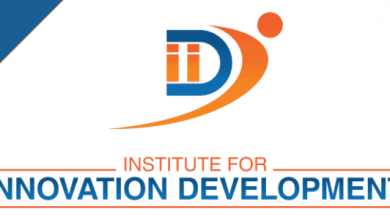Ask an Advisor: High-Net-Worth Tax Planning After the One Big Beautiful Bill Act: What Smart Moves Should I Consider Now?


To make Wealthtender free for readers, we earn money from advertisers, including financial professionals and firms that pay to be featured. This creates a conflict of interest when we favor their promotion over others. Read our editorial policy and terms of service to learn more. Wealthtender is not a client of these financial services providers.
➡️ Find a Local Advisor | 🎯 Find a Specialist Advisor
Ask an Advisor: High-Net-Worth Tax Planning After the One Big Beautiful Bill Act: What Smart Moves Should I Consider Now?
The expiration of many provisions of the 2017 Tax Cuts and Jobs Act (TCJA) at the end of 2025 created significant uncertainty for high-income taxpayers. The passage of the One Big Beautiful Bill Act (OBBBA) in July 2025 preserved some of the TCJA’s most favorable tax policies while also introducing new rules designed to generate additional revenue from wealthier households. With over 800 pages of legislation, the law is dense—but several provisions stand out as especially important for high-net-worth individuals seeking to optimize tax, estate, and charitable strategies. Below is a breakdown of the most relevant changes.
Income Tax Rates
OBBBA permanently extends the reduced income tax rates enacted under the TCJA. All brackets will continue to adjust for inflation, and the lowest two brackets (10% and 12%) receive an extra year of inflation protection before bumping into the 22% bracket. This creates a slight but meaningful decrease in effective tax rates for most taxpayers.
Standard Deduction
The standard deduction increases permanently and is indexed annually for inflation. For 2025, it rises to $15,750 for individual filers and $31,500 for married couples filing jointly.
Itemized Deduction Limit for High-Income Earners
High-net-worth taxpayers in the 37% bracket face a new limit on itemized deductions. The allowable deductions are reduced by 2/37 of the lesser of total itemized deductions or the amount of their taxable income plus itemized deductions that exceeds the top-bracket threshold.
SALT Deduction Limit
Beginning in 2025, the state and local tax (SALT) deduction cap increases to $40,000 and will rise by 1% annually through 2029. However, this benefit phases out when MAGI exceeds $500,000, at which point the cap reverts to $10,000.
Alternative Minimum Tax (AMT) Changes
Starting in 2026, AMT thresholds revert to 2018 levels ($500,000 single / $1,000,000 joint), indexed for inflation. The exemption phaseout rate also doubles from 25% to 50%, creating a 42% marginal tax rate for households within this income range.
Estate and Gift Tax Exemption
One of the biggest wins for wealthy families is the estate and lifetime gift tax exemption was permanently extended and increased to $15,000,000 per person ($30,000,000 per couple) starting in 2026, indexed for inflation. This offers significant opportunities for long-term wealth transfer and legacy planning.
Charitable Contribution Limits
Beginning in 2026, high-income taxpayers who itemize will see restrictions on charitable contribution deductions:
- 0.5% of AGI will be non-deductible each year.
- Top-bracket taxpayers will only receive a 35% deduction rate, not 37%.
Tax planning for high-income households such as front-loading charitable donations in 2025, using a donor-advised fund, or bunching gifts into a single tax year could help maximize the deduction under the current rules.
Expanded 529 Plan Expenses
Starting in 2026, 529 education savings plans cover more qualified expenses, including homeschooling curriculum, tutoring, standardized test fees, college enrollment, and credentialing programs.
Key Takeaways
The permanence of lower tax rates, the expanded SALT cap, and higher estate tax exemptions are clear wins. Yet, tighter AMT rules, new itemized deduction limits, and charitable giving restrictions will offset some of those benefits.
The bottom line: timing is everything. 2025 offers a final window to maximize deductions, accelerate charitable giving, and lock in favorable tax treatments before the more restrictive provisions take effect.
If you’re a high-net-worth individual, now is the time to revisit your tax, estate, and charitable planning before the new rules reshape your financial picture.
Have a Question to Ask a Financial Advisor?
When you’re uncertain about money matters, submit your question to Wealthtender, and it may be answered by a financial advisor in an upcoming article or in the Wealthtender Expert Answers Forum.
Need personalized help? Visit wealthtender.com to find the right financial advisor for your unique needs.
This article was originally published on Wealthtender and is intended for informational purposes only and should not be considered financial advice. You should consult a financial professional before making any major financial decisions. Wealthtender earns money from financial professionals, which creates a conflict of interest when these professionals are featured in articles over others. Read the Wealthtender editorial policy and terms of service to learn more. Wealthtender is not a client of these financial services providers.
About the Author
John Foligno, CMC® Providing tax-efficient financial counsel to professionals and business owners.
Areas of Focus
Financial Life Planning Investment Management Owning a Business Retirement Planning Taxes
Compensation Methods
Fee Only Flat Fee Offers Advice-Only Services Percentage of Assets Managed
John Foligno, CMC® | Grand Life Financial




